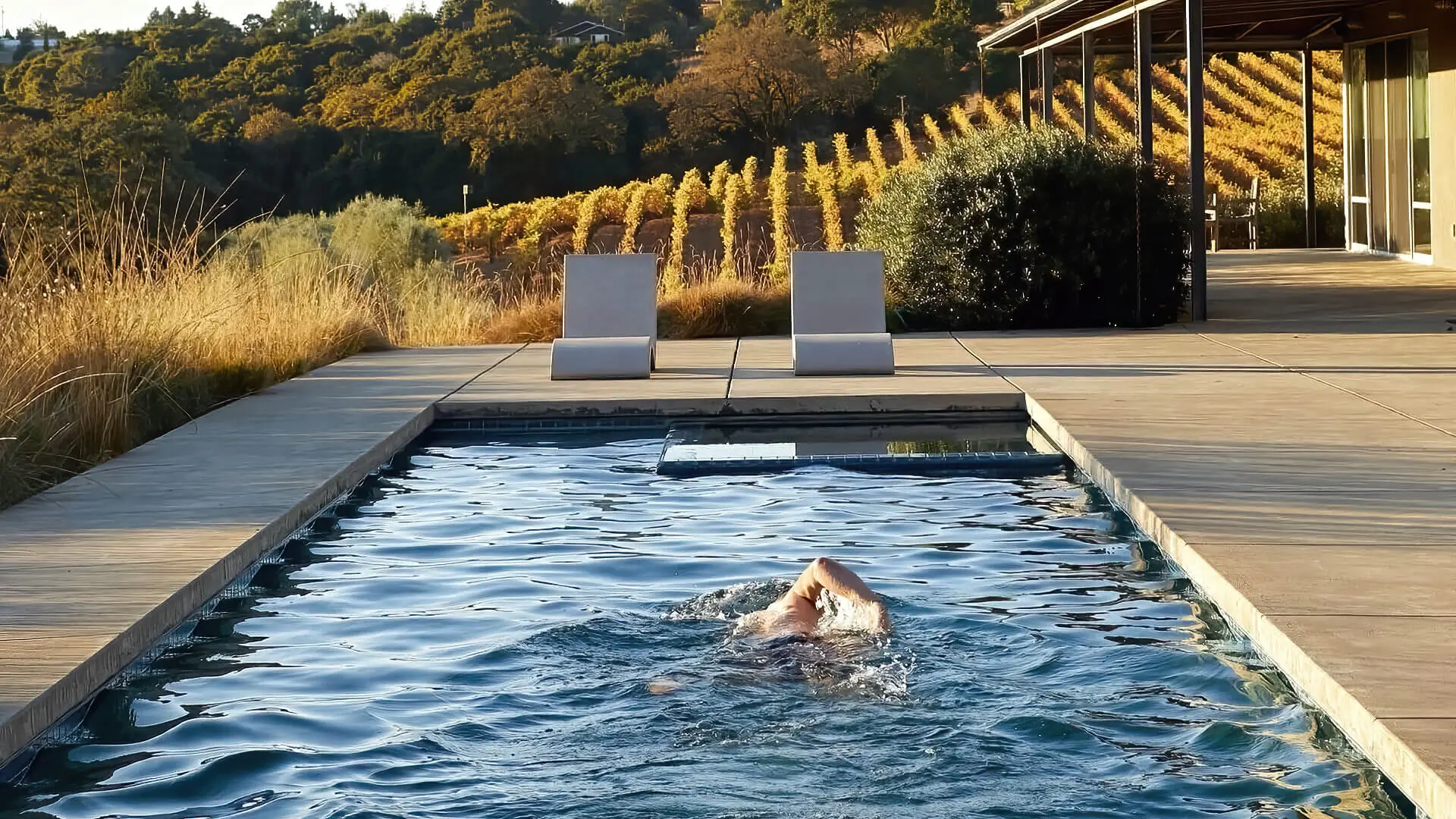A lap pool is a specialized swimming pool designed for the purpose of swimming laps. It is longer and narrower than a traditional swimming pool, allowing swimmers to swim continuously without having to turn around frequently. Lap pools are popular among athletes, fitness enthusiasts, and those who want to incorporate swimming as part of their exercise routine. In this article, we will explore the typical length of a lap pool and why it is important for swimmers.
:max_bytes(150000):strip_icc()/what-is-a-lap-pool-2736848-hero-d013e352e3f24c088262818a6c16f4e1.jpg)
Credit: www.thespruce.com
Standard Lap Pool Length
The standard length of a lap pool ranges from 25 to 50 meters (82 to 164 feet). The most common length for competitive lap pools is 25 meters (82 feet) or 50 meters (164 feet). These lengths are recognized by swimming federations and are used in competitive swimming events such as the Olympics and World Championships.
For recreational lap pools, the length can vary based on the available space and the specific needs of the individual or organization. Some lap pools may be shorter than the standard length, such as 15 or 20 meters, while others may be longer, reaching up to 100 meters (328 feet) or more.
Importance of Lap Pool Length
The length of a lap pool is crucial for swimmers, as it determines the distance they can swim without interruption. Longer pools, such as those with a length of 50 meters, are ideal for competitive swimmers who train for long-distance events. These pools allow swimmers to simulate race conditions and practice their technique over an extended distance.
Shorter lap pools, on the other hand, are suitable for individuals who prefer shorter distance swims or have limited space available. They are also popular among beginners who are just starting to incorporate swimming into their fitness routine. The length of the pool should align with the swimmer’s goals and abilities.
Benefits of Lap Swimming
Lap swimming in a lap pool offers several benefits for swimmers of all skill levels:
- Cardiovascular Fitness: Swimming laps is a great way to improve cardiovascular fitness. It provides a full-body workout that engages multiple muscle groups and increases heart rate.
- Low-Impact Exercise: Swimming is a low-impact exercise that puts less stress on joints compared to activities like running or weightlifting. It is an excellent option for individuals with joint pain or injuries.
- Improved Endurance: Regular lap swimming helps build endurance and stamina. Swimmers gradually increase their distance and speed, leading to improved overall fitness levels.
- Muscle Toning: Swimming engages various muscle groups, including the arms, legs, core, and back. It helps tone and strengthen these muscles, leading to a lean and sculpted physique.
- Weight Loss: Swimming laps can aid in weight loss as it burns a significant number of calories. The resistance of the water also adds to the intensity of the workout.
- Stress Relief: Swimming is a relaxing activity that can help reduce stress and promote mental well-being. The rhythmic movements and the soothing sensation of water have a calming effect on the mind.

Credit: www.thepoolco.com.au
Tips for Lap Swimming
To make the most out of your lap swimming sessions, consider the following tips:
- Warm-up: Begin each session with a warm-up to prepare your body for the workout. This can include dynamic stretches and a few laps of easy swimming.
- Focus on Technique: Pay attention to your swimming technique to maximize efficiency and prevent injury. Consider taking lessons or working with a swim coach to improve your form.
- Vary Your Workouts: Mix up your swimming routine by incorporating different strokes and drills. This helps target different muscle groups and keeps the workouts interesting.
- Set Goals: Set specific goals for your lap swimming sessions, such as increasing the distance or improving your speed. Having goals can help motivate you and track your progress.
- Stay Hydrated: Drink plenty of water before, during, and after your swim sessions to stay hydrated. Even though you are surrounded by water, swimming can still cause dehydration.
- Cool Down: After completing your laps, finish with a cool-down period. This can include gentle swimming, stretching, or using pool equipment for additional exercises.
Conclusion
The length of a lap pool typically ranges from 25 to 50 meters, with 25 meters being the standard for competitive swimming. The length of the pool is important as it determines the distance swimmers can swim without interruption. Lap swimming offers numerous benefits, including cardiovascular fitness, low-impact exercise, improved endurance, muscle toning, weight loss, and stress relief. By incorporating lap swimming into your fitness routine and following the tips mentioned, you can make the most out of your swimming sessions and enjoy a healthier and fitter lifestyle.




